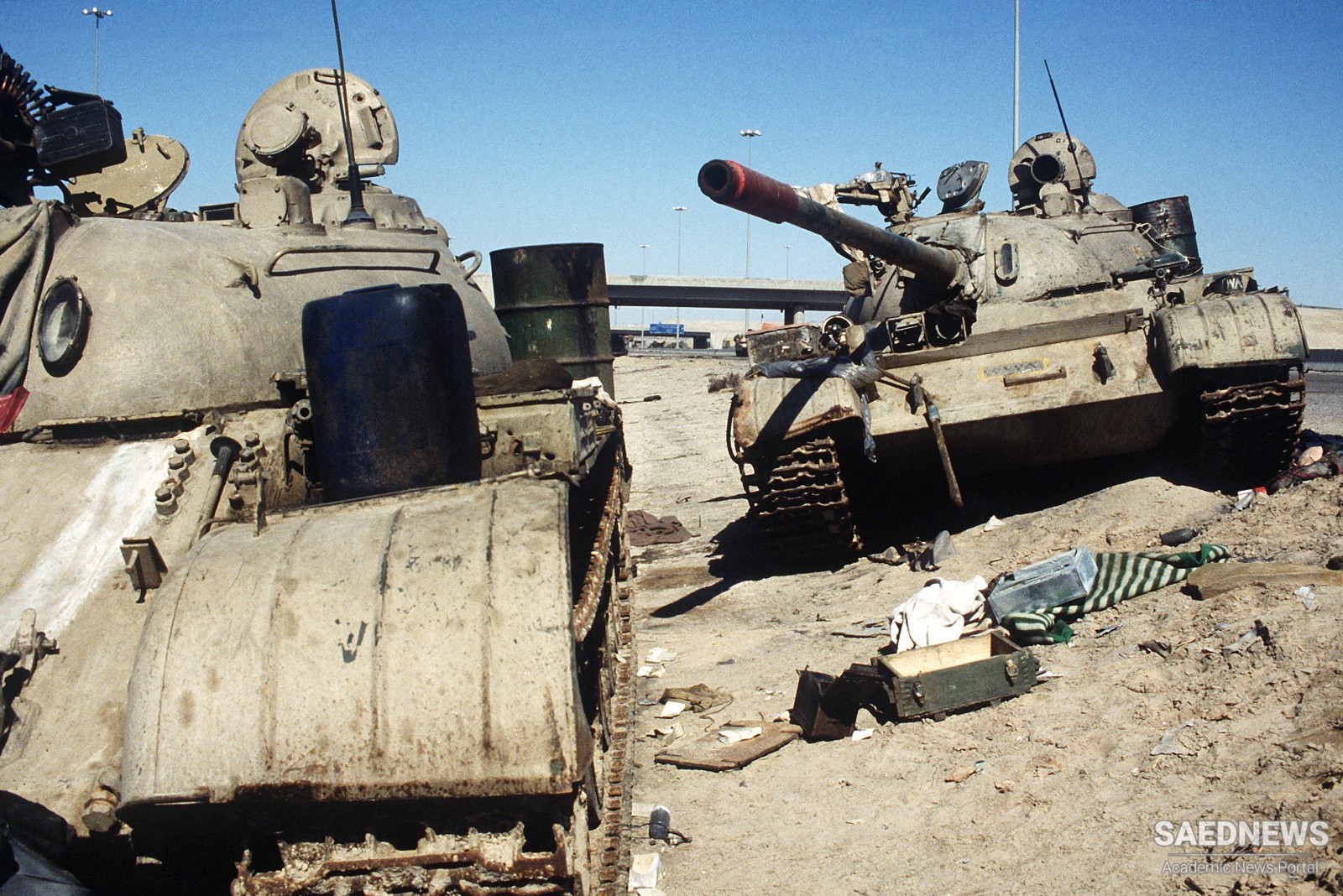The Kuwaiti army was not on the alert, and troops at their posts could not mount an effective defense. Some aircraft operating from southern Kuwait attacked Iraqi armored columns before their air base was overrun, and they sought refuge in Saudi Arabia. Of the 20,000 Kuwaiti troops, many were killed or captured, although up to 7,000 escaped into Saudi Arabia, along with about 40 tanks. The United Nations had given Saddam Hussein until January 15 to withdraw from Kuwait.
Just hours after the deadline had passed, on board the warships of an international armada in the Persian Gulf region, pilots and flight crews prepared for the biggest air strike since World War II. On U.S. warships, sailors prepared Tomahawk land attack missiles (TLAMs) for their first combat launch. Shortly after midnight, several dozen streaked away into the darkness, headed for Baghdad at 700 mph and carrying explosive warheads weighing 1,000 pounds.
An hour later, while the TLAMs were still in flight, helicopters attacked early warning radar sites in southern Iraq. Stealth fighters had already passed over these sites en route to attack targets in western Iraq and Baghdad. The helicopters, cruise missiles, F-15E Eagle fighters, and British GR-1 Tornado fighter bombers tore gaps in Iraqi radar coverage for the smaller fighter aircraft which were following.
At about 3 a.m. local time (7 p.m. EST) on January 17, a huge air armada led by a fighter sweep of F-15s and F-14s moved north from staging areas in Saudi Arabia toward Iraq. They took off in pairs, disappearing as they gained altitude. The aircraft were heavily loaded with bombs and under-wing fuel tanks for the long trip north. They also were armed with cannon and air-to-air missiles for self-defense.
At the Pentagon in Washington, D.C., planners were aware that each bomb could have a potential moral and political impact. Iraq has a rich cultural and religious heritage dating back several thousand years. Within its borders are sacred religious areas and thousands of archaeological sites that trace the evolution of modern civilization. To avoid damaging mosques, religious shrines, and archaeological sites, as well as civilian facilities and the civilian population, American military strategists, intelligence agencies, and the U.S. State Department had drawn up a joint no-fire target list.
This list was a compilation of historical, archaeological, economic, religious and politically sensitive installations that could not be targeted. In addition, target intelligence analysts studied a six-mile area around each master attack list for schools, hospitals, and mosques to identify targets that required extreme care in planning. When targeting, if officers calculated the probability of collateral damage as too high, the target was added to the no-fire list. Shortly before dawn, Baghdad residents heard explosions and saw flashes of light. CNN news presenters rushed out on to the balcony of their Baghdad hotel to broadcast live the start of the Persian Gulf War, or Operation Desert Storm.


 Saddam Hussein the Dictator of Iraq
Saddam Hussein the Dictator of Iraq














































